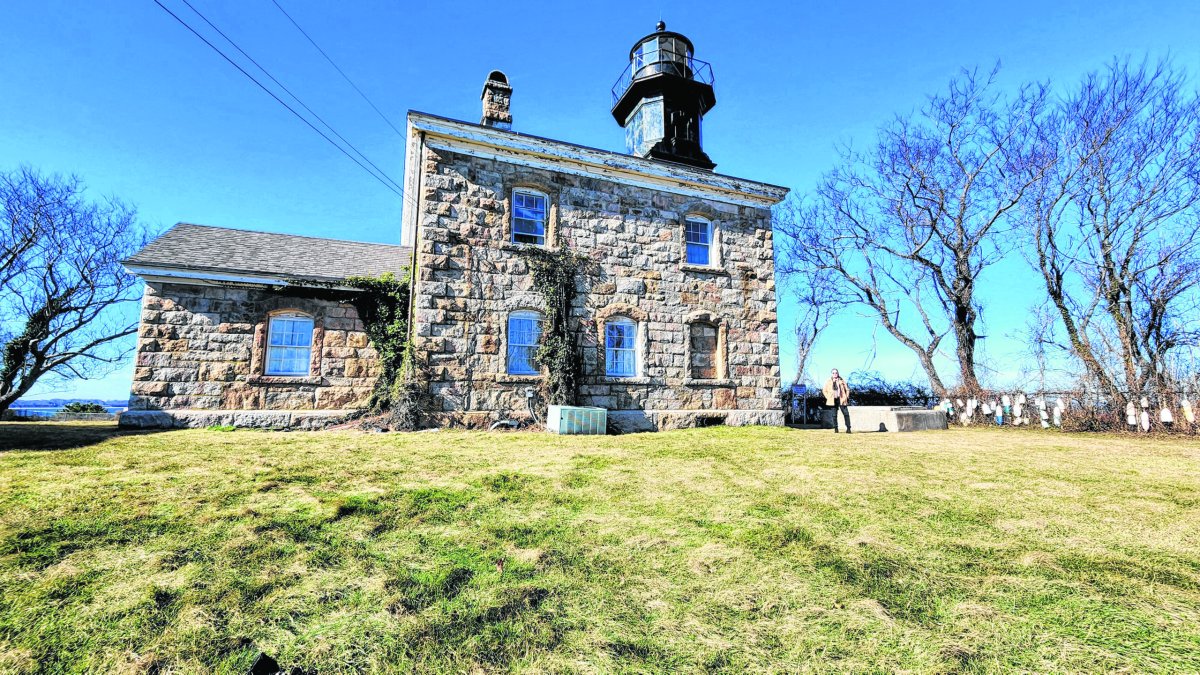Nestled between Stony Brook and Port Jefferson lies the Incorporated Village of Old Field. For 156 years its lighthouse has overlooked Long Island Sound. Recently, the Old Field Point Light Station was placed on the New York State and National Register of Historic Places, as the only submission on Long Island to be granted that recognition in the 2023 application cycle. Village Trustee Rebecca Van Der Bogart and her wife Hayley Devon Ogle have lived in Old Field since 1997, and Van Der Bogart was instrumental in making this important designation happen. We took some time to hear her story.
Long Island Press (LIP): Please tell me about your efforts to get Old Field Point Lighthouse placed on the National Register.
Rebecca Van Der Bogart (RVDB): It’s taken me three and a half years to get here. I didn’t run to be the lighthouse person. I ran to send the message that Old Field is more inclusive and a great place to live. When I took office they said, “Okay, you are responsible for the lighthouse, the grounds and trees on the sides of the roads in the village.” There was no playbook. I learned by getting thrown into the fire and realized there was much that needed to be done. Soon I discovered that the U.S. Coast Guard had been sending letters to the village, warning us that we were not keeping up our end of the bargain of maintaining the lighthouse and that we were in jeopardy of triggering a revert clause. Not knowing what that meant, I began to look things up and found the quitclaim deed from 1929. I researched and reached out to people to better understand what it all meant. It’s been an education.
LIP: So Old Field Village owns the lighthouse, but the Coast Guard was threatening to take it back?
RVDB: Yes, there was no such thing as the Coast Guard when they started building lighthouses. When we moved towards electricity and away from oil, it was often decided lighthouses and their keepers weren’t needed anymore. The Coast Guard started auctioning them off or sold them to historic societies and municipalities. Village of Old Field was incorporated in 1927, and acquired Old Field Point Lighthouse in 1929 for $2,400. This lighthouse replaced another that once stood on this bluff in 1869. It was built for the sum of $12,000. So we got a deal. It’s one of six sister lighthouses, which means that there are other lighthouses that look much like Old Field Point Lighthouse*. Old Field Point was the only one that wasn’t designated to be on the national or state register. When I realized that, I said, this is crazy. We had no access to grants and funds. Getting on the designation for historic significance is a big thing because it opens up resources to help us restore this lighthouse.
LIP: Does Old Field Point Lighthouse have a Fresnel lens?
RVDB: We don’t have a Fresnel lens. We have a DC lens. I don’t know where the Fresnel lens went. It was removed in the 1920s. A radio tower was built and they put the light on it. From what I’ve been told from historians, as erosion on the bluff became an increasing problem, the Coast Guard took down the radio tower in 1991, and they put the light back inside the lighthouse. The light is actually red and green, it’s not white light. The tower is 50 feet high, atop a 30-foot bluff. That light is still an active navigational point. We need these lighthouses because mariners need them. We’ve got a lot of rocky shoals on the North Shore and they’re dangerous.
LIP: Does Old Field Village use the lighthouse as a village hall?
RVDB: Yes, thanks for bringing that up. You know what happens to any old building when it’s unoccupied? It starts to break down. That’s what happened to other lighthouses that are similar to the Old Field Point Lighthouse. They were unoccupied, so kids broke in and started fires or there was water penetration that slowly destroyed them. Fortunately, Old Field has used the lighthouse as a village hall, so there’s been people in the building forever. It’s never been an abandoned building, but now it’s at this tipping point. Mayor Tom Gulbransen and my fellow trustees agree we can’t afford a $2.5 million project, but we can’t just kick this can down the road. It’s not just the lighthouse for the Village of Old Field, everybody should want to make sure that it’s standing for the next 200 years. The lighthouse is 156 years old. Another lighthouse preceded it, built in 1823, but it was poorly built. Congress issued funding to replace it, but the original keeper’s house is still here. We’ve maintained the keeper’s house, which is 200 years old, and it’s fantastic.
LIP: Do you use the keeper’s house for municipal use too?
RVDB: Yes, we use it for village meetings. The head of the constabulary and his wife used to live in the lighthouse and it was part of his compensation, while the village clerk and treasurer worked from the keeper’s house. In the late 1990s he retired, and the new chief didn’t want to live in the lighthouse, so it was converted into the Village Hall. The keeper’s house remains as a village meeting area.
LIP: What else do you wish to address in the article?
RVDB: Many people have been so generous and there is a tribe of people out there that love lighthouses, and are committed to saving them. I’ve become part of that tribe. We are going to have to create a fundraising campaign. There’s a big undertaking ahead for us. Eventually we hope to open a museum with an educational component. We have partnered with the Three Village Historic Society to accomplish this. Our goal is to conduct public tours where people can enjoy the views from the top of tower. Everybody’s so busy looking down at their phones. People should be connected to the outdoors and have access to significant historic places. Watch the seals frolicking in the Long Island Sound or enjoy that romantic sunset from the lighthouse. It’s inspiring and you feel safe because this building has withstood the test of time.
*The sister lighthouses mentioned in the interview include Great Captain Island Lighthouse, Morgan Point Lighthouse and Sheffield Island Lighthouse in Connecticut; Block Island North Lighthouse in Rhode Island, and Plum Island Lighthouse of Long Island, New York.

































